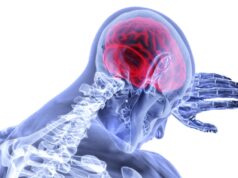 A team of researchers from Denmark have developed a new artificial intelligence (AI) framework to address the number of strokes that go unrecognised by human emergency call handlers. The framework outperformed emergency call handlers in recognising stroke for both sexes, and across all age groups studied, indicating its potential as a supplementary tool for early and precise stroke identification in the future.
A team of researchers from Denmark have developed a new artificial intelligence (AI) framework to address the number of strokes that go unrecognised by human emergency call handlers. The framework outperformed emergency call handlers in recognising stroke for both sexes, and across all age groups studied, indicating its potential as a supplementary tool for early and precise stroke identification in the future.
The retrospective study, presented today at the European Stroke Organisation Conference (ESOC; 24–26 May, Munich, Germany), drew from the Danish Stroke Registry and a dataset of more than 1.5 million calls made to the Copenhagen Emergency Medical Services between 2015 and 2020—which included over 7,000 stroke-related calls. Researchers utilised these data to train an AI framework to initially transcribe the call audio and then predict the risk of stroke based on the transcribed text.
The results—evaluated on calls from 2021—revealed that the AI framework performed more effectively than emergency call handlers in identifying stroke cases. The framework achieved a recall (sensitivity) of 63% and a precision (positive predictive value) of 24.9%, which resulted in an F1 score of 35.7. In contrast, emergency call handlers had a recall of 52.7% and precision of 17.1%, resulting in an F1 score of 25.8.
Jonathan Wenstrup (Copenhagen University Hospital, Copenhagen, Denmark), one of the lead authors of the study, said: “As one of the first points of contact for patients seeking medical assistance, emergency call handlers play a critical role in facilitating early and accurate stroke recognition. Many stroke cases can go undetected at this stage, leading to delays in treatment that can have potentially life-threatening consequences for patients.
“With the implementation of this new, cost-effective supporting tool, we can enhance stroke identification by call handlers and ensure more patients receive appropriate and timely care, ultimately improving patient outcomes.
“As with any new tool, further research and development are necessary to improve the framework’s accuracy and expand its capabilities. In the future, it may be possible to train the framework directly from the call audio, bypassing the transcription step, as well as incorporating non-word audio—such as a slurred voice—into the training data. However, given the promising results of this study, it is already clear that technologies like this have the capability to completely transform stroke diagnosis and care.”













